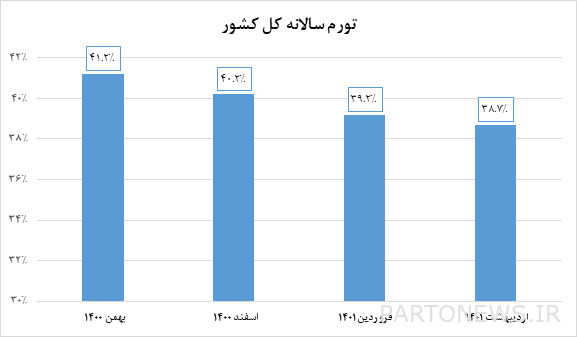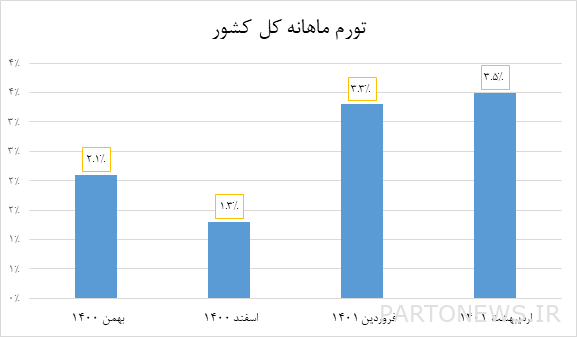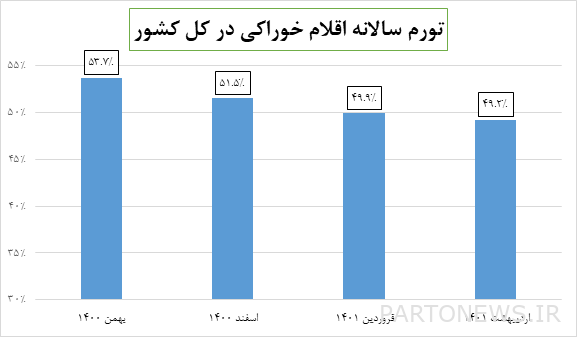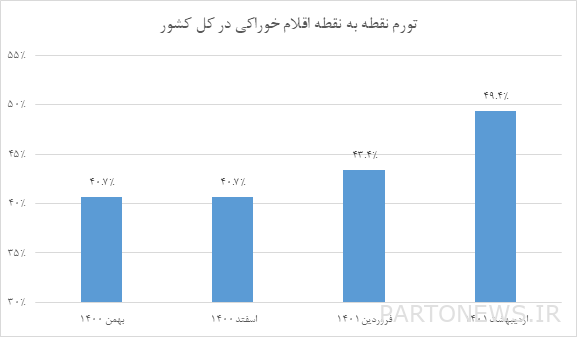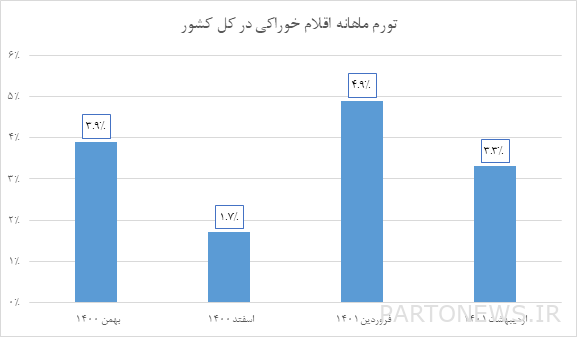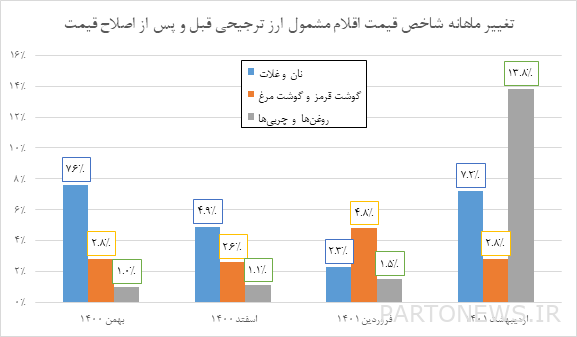An autopsy of the country’s inflation in the month of price reform

According to the Iran Economist, starting in June and according to the monthly schedule, the Statistics Center of Iran published a report on the consumer price index in May 1401. Considering the past of the plan to reform prices and subsidies, it is important to study inflation in April and especially in May in terms of measuring the inflationary effect of indirect currency subsidies. In the first two months of this year, the promise of reforming foreign exchange subsidies was fulfilled. In this process, the previous indirect allocation method was realized through direct payment to the people as the final beneficiary, thus eliminating the negative effects of preferential currency allocation, the government’s goal of “maintaining the purchasing power of the people, especially the economically disadvantaged.” Achieve a more accurate and effective form. In this report, with an analytical look at the effect of inflation caused by the reform of the subsidy system in the first two months of this year, the months of implementation of this policy are discussed.
Before going into the details of the inflation of the last two months, a look at the annual inflation trend of the whole country shows that the path of headline inflation as the main indicator of measuring the cost pressure has continued to decline.
As it turns out, the downward trend in inflation has continued even in May as the months of subsidy reform. However, in May, the rate of inflation slowed down, which was predictable.
Another indicator in examining the inflationary effect of this plan is point-to-point inflation. A recent report by the Statistics Center shows that point-to-point inflation has increased as expected with the implementation of this route plan. However, point-to-point inflation growth was much lower than what many critics of preferential exchange rate reform had previously claimed.
According to a new report by the Statistics Center, point-to-point inflation in May increased by about 4% compared to the previous month. However, this growth rate was much lower than the claims of the defenders of the continued allocation of 4200 Tomans.
In addition to annual and point-to-point inflation, it is necessary to examine the monthly inflation trend to analyze the effect of subsidy reform. The chart below shows the monthly inflation trend of the whole country during the last 4 months.
As it turns out, the point-to-point inflation index has not jumped, despite the relative increase in the first two months of this year.
After examining the indicators of headline inflation, it is time to examine the inflation of food items as the core of reforming the subsidy system. The chart below shows the details of the annual inflation of food items in the whole country during the last 4 months.
A look at the annual inflation of food items shows that the downward trend of inflation in this commodity group continues, but the rate of decline in inflation of these commodities has slowed down in the last two months, mainly due to the reform of the price system and subsidies for this commodity group.
To more accurately measure the effect of subsidy reform on food inflation, it is necessary to examine the point-to-point inflation path. A recent report by the Statistics Center showed, as expected, point-to-point inflation growth following the recent plan. The point-to-point inflation path of food items is plotted in the chart below.
As it is known, the inflationary effect of the realization of the prices of items subject to preferential currency in May has been fully manifested. Accordingly, in order to compensate for the negative effect of this price increase on household livelihood, the government allocated direct subsidies to the people to improve their purchasing power, in order to maintain household purchasing power at the same time as prices rise.
In addition to annual and point-to-point inflation, examining the monthly inflation trend of food items provides a more accurate and complete picture of the inflationary effect of price reform and subsidies. The monthly inflation trend of food items in the last 4 months according to the statistics of the Statistics Center is as follows.
According to the findings of the Statistics Center, despite the growth of monthly inflation of food items in the last two months, not only is there no news of a jump in this index, but even in May, this index has declined to the point where it is less than the monthly inflation in February. Is.
The Statistics Center’s report on the consumer price index contains another statistical point. In part of this report, details of changes in the price index of major commodity groups are reported, three of which, bread and cereals, red meat and poultry, as well as oils and fats, specifically reflect the effects of price realization. In the category of bread and cereals, due to the growth of flour prices and the increase in the price of industrial breads, the growth of the monthly price index increased from 2.3% in April 1401 to 7.2% in May of this year. Also, the consumer price index in the category of red meat and poultry meat increased to 4.8 percent in April, but then decreased to 2.8 percent in May. In the category of oils and fats, which witnessed the highest growth of the monthly price index, this index has increased from about one percent in February and March of last year to 13.8 percent in May of 1401.
A review of the above statistics shows that with the correction of prices and the replacement of direct subsidies instead of the allocation of preferential currency, contrary to some claims of the defenders of the continuation of the 4200 Toman exchange rate policy, there was no unbridled inflation and jump in price indices. Considering that a large part of the reform currency subsidy reform route has been completed, it seems that the main inflationary burden of this plan was discharged in May and June is the last month of showing the inflationary effects of this plan. Therefore, it is expected that due to the fact that point-to-point inflation exceeds annual inflation, the country’s annual inflation index increased exceptionally in June, but then returned to its downward path with the end of the inflationary effects of the plan. In the meantime, what is important is that the government focuses on accurately identifying those receiving subsidies and preventing the removal of even one beneficiary from receiving subsidies. If the beneficiaries are identified accurately and fair subsidies are allocated to different deciles, we can expect a significant improvement in the income inequality index (Gini coefficient) this year. Of course, to clarify this issue, we have to wait for the report of the Statistics Center on the expenditure and income of the country’s households next year.


